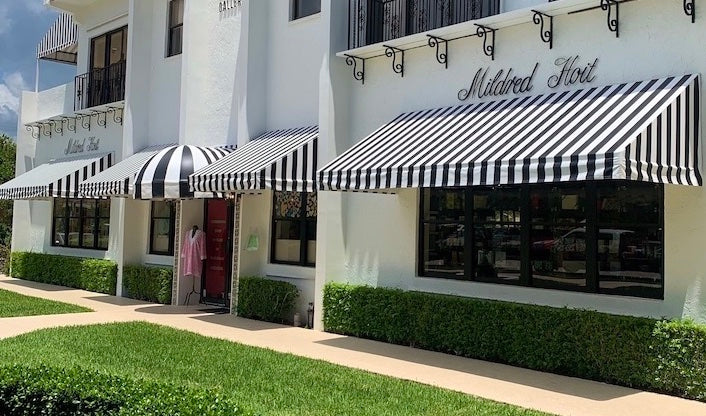History of Cashmere
Cashmere is often regarded as the crème de la crème of the fabric world. It is synonymous with luxury and comfort. This prized fabric has a rich and fabled history. Throughout history, it has been the fabric of choice for royalty and the wealthy. Despite its ability to attract the interest of the rich and important, the origins of Cashmere are surprisingly humble. It is now the fabric of choice for all the top designers in the world, and over the years, it has become more accessible to the general public. At Mildred Hoit, we have a large collection of Cashmere clothing items that are sure to surprise and delight you. Now, let’s get into what Cashmere is and where it comes from. Keep on reading to learn more!
Cashmere goats
The coveted fabric of Cashmere comes from the hair that grows on a type of goat called Capra Hircus. This goat is a native species of the High lands of Tibet. This species has historically been known to exist in part of Mongolia and the Himalayas. The process of creating wool from goat’s hair was a technique that was first developed in the region of Kashmir in the sub-continent. The name Cashmere is an adopted name that pays tribute to the birthplace of this coveted fabric. Although Cashmere production has expanded since, and there are many more regions around the world that produce Cashmere now, if you want to pinpoint the most authentic region where it all started, you would want to look at the uplands of Tibet and Ladakh.
The goat that Cashmere is harvested from, Capra Hircus, is a very robust and rugged animal. The natural habitat of this goat is some 3900 meters above sea level in the upper part of some of the world’s most harsh mountains. The temperature in these regions can go as low as minus 40 degrees in the winters. As a coping mechanism against the harsh climate conditions, the Capra Hircus develops a thick coat of fur. And this is the same coat of fur that is harvested and converted into the prized fabric of Cashmere. The Capra Hircus is a wild goat, but it has been domesticated in some regions of the world, such as Mongolia. This makes Cashmere's production much easier since you don’t have to deal with the extreme climate in the native region of Capra Hircus.
How is Cashmere Yarn made?
As you can imagine, Cashmere is far from its finished form of Cashmere Yarn when it is harvested from Capra Hircus. It is actually quite a long and arduous process from goat fleece to Cashmere Yarn. It all starts when Cashmere Wool is harvested from the underbelly and neck of the Capra Hircus. As we explained earlier, this coat of fur is a way for the goats to survive the below freezing point temperatures in the winter, so naturally, the coat is very thick and comprises many layers. The outer layer is very coarse. Then on the inside, there is the softer and finer layer. The outer layer is called the guard hair. The inner layer is what is primarily used in the production of cashmere yarn. So, the outer layer has to be de-haired and removed. The de-haring process is done through machines that separate the coarse hair from the fine ones. Once this process is completed, the Cashmere is ready for the next step. It is dyed to the color of choice for the Cashmere yarn. Next, this dyed version is processed into textile yarn, garments, and fabrics. The coarse outer layer that was separated is used to make brushes and other items that require longer and coarser hair.
When did the Cashmere revolution start?
Cashmere is one of those rare fabrics that have survived changing trends and times. It has been the fabric of choice for the affluent and tasteful for centuries now. We can track back the history of when people first started wearing Cashmere back to the 13th century. When Marco Polo landed in Mongolia on his exploration conquest, he saw the depiction of a wild goat that natives of the region domesticated. So, it is believed that the people of Mongolia had been using Cashmere for their clothes back then. It would take a few more centuries for Cashmere to arrive in Europe. It is believed that the trading of Cashmere started back in the 18th century. The first clothing item that was popularized was Cashmere shawls that traders in Kashmir were exporting to Europe. Among the first countries that adopted Cashmere shawls were Great Britain and France. Since Cashmere was very expensive at the time, it was adorned only by upper-class women who wanted a stylish way of keeping warm. They would wear these shawls over their shoulders to fight the cold weather. There is an interesting story of how Cashmere mania began in France. An army General sent a Cashmere shawl to his wife in France while he was in the region of Kashmir, and the trend caught on from there. By the 19th century, Cashmere had become the definition of mainstream luxury. It was worn by anyone who had a higher status in society. Cashmere also progressed from shawls to sweaters and jumpers. And nowadays, Cashmere is still the fabric of choice when people are looking to buy something luxurious and comfortable. The only difference is that Cashmere is more readily available now, and there are many brands that are selling it. Cashmere is being used for kinds of dresses and clothing accessories. It is no longer something that only the rich and affluent can afford or find. It has very much become a staple in the modern fashion landscape.
Why should you buy Cashmere clothes?
If you are thinking to yourself why you should try Cashmere clothes, there are many answers to this question. Cashmere has survived changing trends and the ever-evolving fashion scene for a few very good reasons. Here are some of the benefits that Cashmere gives you:
- It is very lightweight. This means that it is comfortable. You will find that Cashmere is very easy to wear and feels natural to your body.
- It is a very versatile fabric and can be used for almost any style of clothing. Since it is not bulky, it can be made into anything that you want.
- It feels very lush to your skin. It has a natural stretch to it which means that it will not lose its shape easily. If you care properly for your Cashmere clothes, then they can last you a lifetime.
- It is very adaptable to your surrounding temperature. If you are in a cool environment, then Cashmere wool will adapt accordingly and keep you warm. If you are in a warm environment, then the natural moisture in the Cashmere wool will keep you comfortably cool.
Here are some Cashmere clothing items that you might be interested in:

- Verona Cashmere Shawl – If you are looking for something that will keep you warm and add to your style, then this Cashmere shawl is a must-have accessory for your wardrobe.

- Mildred Hoit Cashmere Crew Sweater – This is a sweater that is somehow appropriate for all kinds of occasions. You can wear this when you go grocery shopping or wear this to a dinner party. It will work fine for anything. This product is also available in a lot of colors so you will be spoilt for choice.

- Cashmere Topper – This stylish yet understated topper is the perfect combination of class and style. In addition, it is available in two shades of blue, which is a great beach color. So, if you are looking for a palm beach Cashmere sweater, it won’t get any better than this.

- Cashmere Poncho Cape – Sometimes we don’t feel like dressing up, or maybe we are just in a hurry. This is the perfect lifesaver in these situations. Just throw this on whatever you are wearing, and you will be ready to go. This is another one of those items that you must have in your wardrobe.
Cashmere is a must-have for any women’s wardrobe. It is one of those essential fabrics that just feel good and look great. If you are looking to buy some great Cashmere clothing items, we highly recommend checking out our Cashmere Collection. We are sure that you will find something that you like. Happy Shopping!





Leave a comment